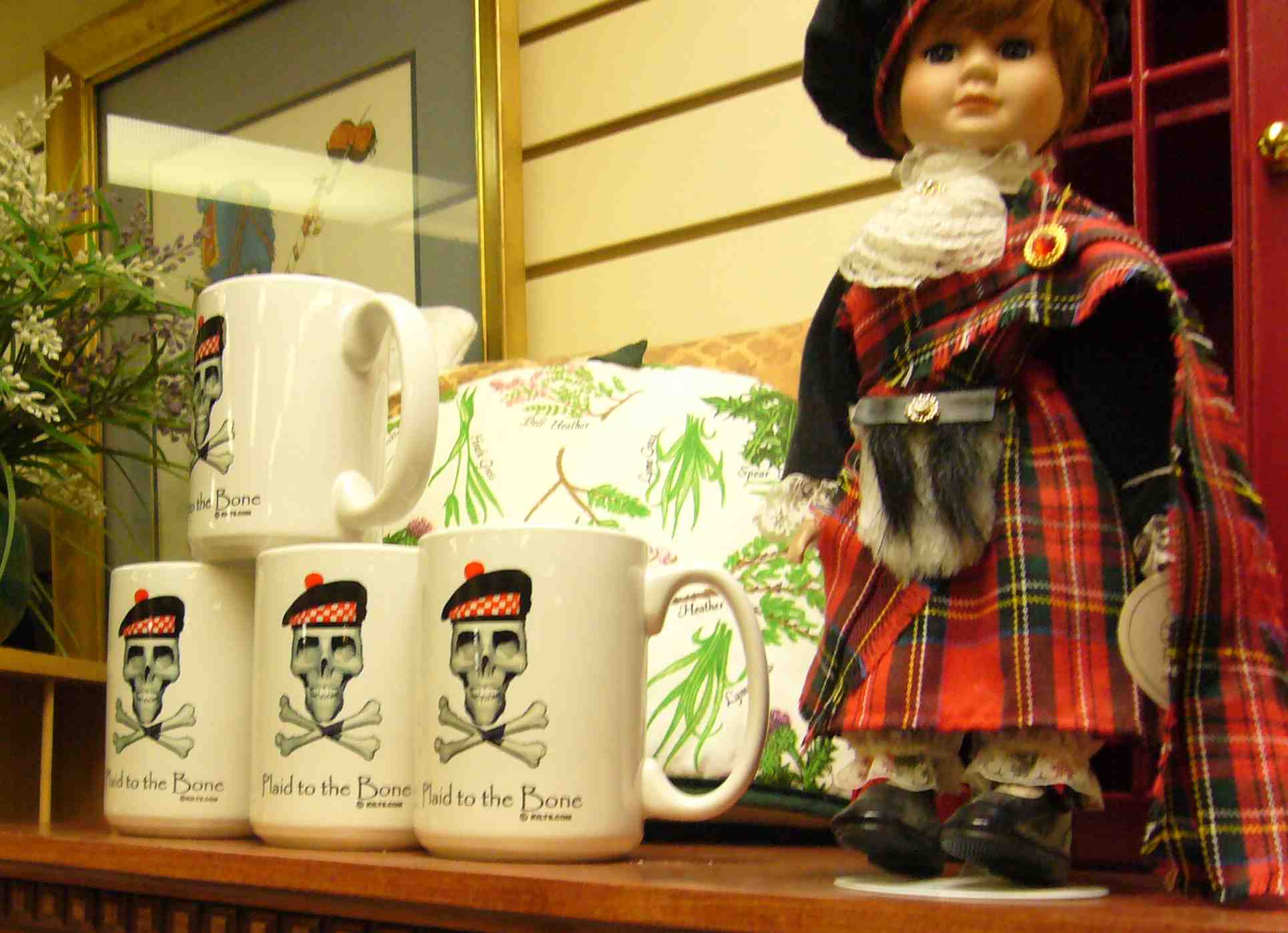…in which I continue my quest to become 100% Scottish by venturing into a Scottish Shoppe in Salem, Oregon
My pace slows as I register the wail of bagpipes filling the synthetically bright, subterranean-level shoppe with their insistent drone. I am instantly sobered by their sound and assailed with sudden doubts about my ability to complete this quest. I really don’t know if I can. It doesn’t seem quite such an amusing endeavour now. I had underestimated how much piping I might have to suffer in order to become a proper Scot. Maybe I don’t really want to become Scottish. Maybe 86% is good enough. Maybe the Kilt and Thistle Shop has a stock of fetching tartan earmuffs in my clan colours.
I’m not a fan of much traditional Scottish music. Like many things, this is my sister Orla’s fault. Her involvement with the Caledonian Strathspey and Reel Society as a teenager meant the rest of us were subjected to an annual fiddle and bagpipe-drenched CD, placed on heavy rotation for several months after each release by our proud parents. Shuddering at the memories and distinctly less jubilant, I slink further into the shop, but before I make it as far as the kilted mannequin, I catch the eye of a smiling woman in an off-white cable-knitted sweater behind the counter.
When she hears my accent, Cheryl Duncan immediately calls through to the back and her husband William lopes out. They start chatting about Scottish-American social shenanigans, making the assumption that I know what they are talking about, and are stopped in their tracks by my sheepish admission that I have no idea what my tartan looks like and that I am actually a bit hazy on the specifics of precisely which clan I am. Some kind of MacDonald, I knew. I called my Dad on the way here and it turns out that we’re MacDonnells, descendants of Sommerled MacDonald, Lord of the Isles.
Before setting out for Salem, I regaled Erin with highlights from the Kilt and Thistle Shop’s websites, Kilts.com and FeatherBonnets.com. I wanted to know who wears feather bonnets. Who even says “feather bonnets?” Back home, black bonnets with what looked like pheasant feathers tucked jauntily in their brims were worn for a short-lived and much-mocked stint by Ryanair’s surly check-in staff at Prestwick Airport. I am curious as to who might don such headgear now. Looking at the Duncans, impeccably dressed in their kilts and matching fisherman’s sweaters, I think that these are the people to explain the intricacies of traditional Scottish attire and complete my knowledge of such stylish shenanigans. I foolishly mention that I feel underdressed.
Within seconds the mannequin in the window is absent from her post and it’s me who is wearing the floor length kilt, puffy white blouse and tight, black velvet waistcoat. They fit me remarkably well. Disconcertingly well. In fact, a middle-aged customer who hadn’t noticed my existence until now starts giving me the eye. It is as if I have suddenly stepped onto his tartan radar.
My eyes light up when I see William approach with what looks like a foot high, black feathery nest.
“I figured you’d want to try this on,” he says with a smile. “This is called a feather bonnet. It’s made of ostrich feathers. This was actually the Highland military helmet for almost 100 years. This is what they actually wore into battle.”
Did they think they’d frighten their enemies away by wearing nests on their heads? By modeling toupés made from feather boa beehives? I try and cram the scary hat on and get a straggle of ribbons in my eyes.
William corrects me, “Ribbons in the back. Tails on the side.” He adjusts my black streamers and surveys his handiwork. I have the pose of an immature seal trying to pull off its very first nose-ball balancing act at the leisure park pool in-crowd initiation ceremony. I try very hard not to laugh. I fail.
“Not very scary,” decides William. “But with these, six-foot fellas became seven feet tall and very ominous.”
It’s more comfortable than you’d think, and as long as I manage to maintain the posture my mother wishes I’d maintain in public, my ominous millinery should be fairly safe from cascading floorwards. I flounce about the store deploying a brisk martial trot. I suspect that William thinks I’m enjoying myself too much, either because I’m cackling like a demented goose or because I haven’t stopped grinning since I tucked a fluffy two-foot sheep under my arm to complete the look.
William cuts in, “Wait till you march in them and they fill up with water. They really get heavy.”
He says this with the voice of experience. I make a note not to do any marching. Flouncing will have to suffice.




One Response to The Tartan Radar